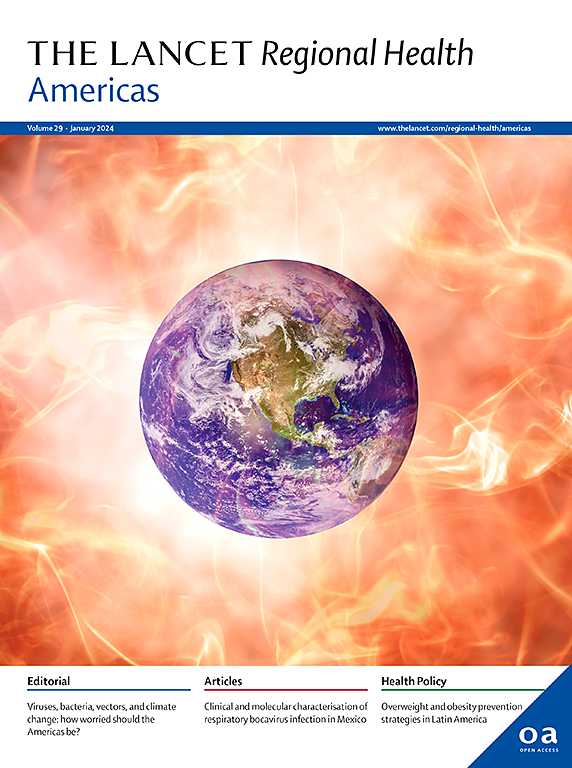Trends in nonmedical ketamine use, poisonings, related deaths, pharmaceutical diversions, and law enforcement seizures: results from annual population-based repeated cross-sectional studies
IF 7
Q1 HEALTH CARE SCIENCES & SERVICES
引用次数: 0
Abstract
Background
The ketamine landscape in the USA is rapidly shifting, especially given recent increases in off-label prescribing of ketamine as a psychiatric treatment. Research is needed to determine the extent to which illicit ketamine is available, nonmedically used, and associated with morbidity and mortality in the USA.
Methods
This observational study used eight unique annual repeated cross-sectional datasets to examine illicit ketamine availability (using seizure data as a proxy), use, and consequences of use, including self-reported nonmedical use among noninstitutionalized individuals aged ≥12 years (2006–2014, 2015–2019, and 2021–2023) and among 12th grade students (2000–2023). Further, it assessed reported ketamine-related poisonings (1991–2023) and mortalities (2020–2023), diversion of undispensed pharmaceutical ketamine (2008–2024), drug seizures testing positive for ketamine (2001–2024), and the number and total weight of ketamine seizures from two additional law enforcement agencies (2017–2024 and 2019–2024). Piecewise linear regression models were used to estimate annual trends.
Findings
Nonmedical ketamine use among individuals aged ≥12 years increased between 2021 (0.19%) and 2023 (0.34%) (b [slope] = 0.08 [SE = 0.001], p = 0.0072). Regarding reported poisonings, there was initial increase from 1994 to 2000 (from 0.17 to 1.40 per 1,000,000 population; b = 0.20 [SE = 0.02], p < 0.0001), a decrease through 2003 (0.58 per 1,000,000 population; b = −0.34 [SE = 0.08, p = 0.0002) and an increase from 2017 through 2023 (from 0.76 to 1.54 per 1,000,000 population; b = 0.12 [SE = 0.03], p = 0.0002). The number of reported diversions increased from 2008 (n = 23) to 2017 (n = 202) (b = 18.72 [SE = 2.20], p < 0.0001) and again from 2021 (n = 183) to 2024 (n = 286) (b = 39.00 [SE = 12.04], p < 0.0001). Regarding seizures, there was an increase in ketamine reports to one agency from 2015 (n = 1448) through 2024 (n = 4008) (b = 201.41 [SE = 57.83], p = 0.0023). In another source, there was an increase in seizures from 2022 (n = 247) through 2024 (n = 502) (b = 127.50 [SE = 10.40], p = 0.0003). Rates of ketamine-involved deaths did not significantly shift between 2020 and 2023. Nonmedical use declined among 12th grade students, first from 2000 (2.49%) through 2005 (1.61%) (b = −0.19 [SE = 0.06], p = 0.0039] and then again from 2005 through 2023 (0.9%) (b = −0.04 [SE = 0.01], p = 0.0019).
Interpretation
Ketamine poisonings, pharmaceutical diversion, and seizures have increased; trends in nonmedical ketamine use vary. Prevention and harm reduction are needed as use and morbidity are expected to continue to increase.
Funding
National Institute on Drug Abuse at the National Institutes of Health.
非医疗氯胺酮使用、中毒、相关死亡、药物转移和执法缉获的趋势:来自年度人口重复横断面研究的结果
氯胺酮在美国的前景正在迅速改变,特别是考虑到最近氯胺酮作为一种精神治疗的标签外处方的增加。需要进行研究,以确定非法氯胺酮在美国的可获得程度、非医疗用途以及与发病率和死亡率的关系。方法本观察性研究使用8个独特的年度重复横断面数据集来检查非法氯胺酮的可得性(以缉获数据为代理)、使用情况和使用后果,包括年龄≥12岁的非机构个体(2006-2014年、2015-2019年和2021-2023年)和12年级学生(2000-2023年)自我报告的非医疗使用情况。此外,它还评估了报告的氯胺酮相关中毒(1991-2023年)和死亡率(2020-2023年)、未分配的氯胺酮药物转移(2008-2024年)、氯胺酮药物检获呈阳性(2001-2024年)以及另外两个执法机构(2017-2024年和2019-2024年)检获的氯胺酮数量和总重量。采用分段线性回归模型估计年趋势。≥12岁人群非医用氯胺酮使用率在2021年(0.19%)至2023年(0.34%)期间呈上升趋势(b[斜率]= 0.08 [SE = 0.001], p = 0.0072)。关于报告的中毒,从1994年到2000年最初有所增加(从每100万人0.17人增加到1.40人;b = 0.20 [SE = 0.02], p < 0.0001),到2003年有所减少(每100万人0.58人;b = - 0.34 [SE = 0.08, p = 0.0002),从2017年到2023年有所增加(从每100万人0.76人增加到1.54人;b = 0.12 [SE = 0.03], p = 0.0002)。报告的改道数量从2008年(n = 23)增加到2017年(n = 202) (b = 18.72 [SE = 2.20], p < 0.0001),从2021年(n = 183)增加到2024年(n = 286) (b = 39.00 [SE = 12.04], p < 0.0001)。在缉获量方面,2015年(n = 1448)至2024年(n = 4008)间,向一家机构报告的氯胺酮数量有所增加(b = 201.41 [SE = 57.83], p = 0.0023)。在另一个来源中,从2022年(n = 247)到2024年(n = 502),癫痫发作增加(b = 127.50 [SE = 10.40], p = 0.0003)。与氯胺酮有关的死亡率在2020年至2023年间没有显著变化。非医疗用药在12年级学生中下降,首先从2000年(2.49%)到2005年(1.61%)(b = - 0.19 [SE = 0.06], p = 0.0039),然后从2005年到2023年(0.9%)(b = - 0.04 [SE = 0.01], p = 0.0019)。氯胺酮中毒、药物转移和癫痫发作有所增加;非医用氯胺酮的使用趋势各不相同。由于使用和发病率预计将继续增加,因此需要预防和减少危害。资助国家卫生研究院的国家药物滥用研究所。
本文章由计算机程序翻译,如有差异,请以英文原文为准。
求助全文
约1分钟内获得全文
求助全文
来源期刊

Lancet Regional Health-Americas
Multiple-
CiteScore
8.00
自引率
0.00%
发文量
0
期刊介绍:
The Lancet Regional Health – Americas, an open-access journal, contributes to The Lancet's global initiative by focusing on health-care quality and access in the Americas. It aims to advance clinical practice and health policy in the region, promoting better health outcomes. The journal publishes high-quality original research advocating change or shedding light on clinical practice and health policy. It welcomes submissions on various regional health topics, including infectious diseases, non-communicable diseases, child and adolescent health, maternal and reproductive health, emergency care, health policy, and health equity.
 求助内容:
求助内容: 应助结果提醒方式:
应助结果提醒方式:


